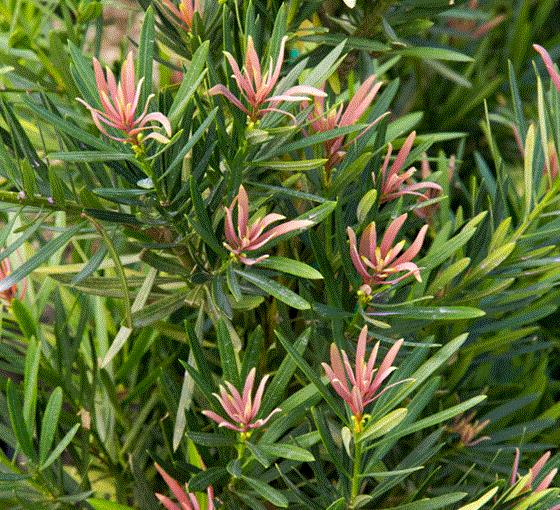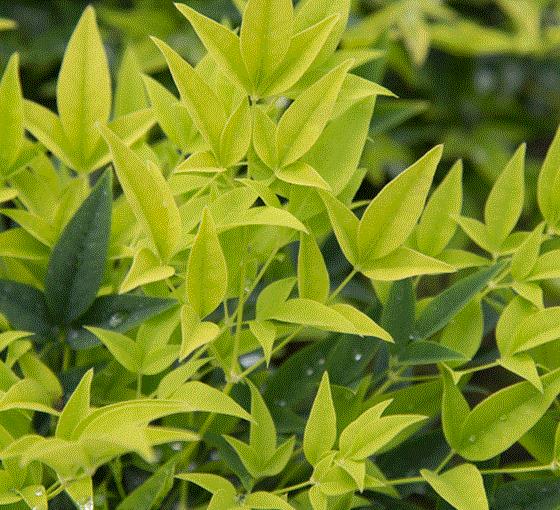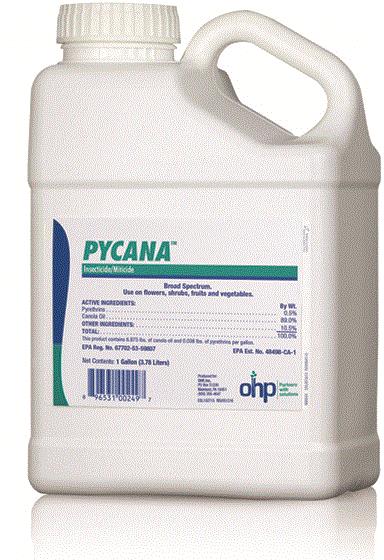Lowe's Closing Orchard Supply
Continuing the West Coast horticulture shakeup/shakeout started by the Color Spot bankruptcy, Lowe’s announced on Wednesday that it’s going to close the 99 locations of Orchard Supply Hardware that it bought in 2013 after Sears spun it off in 2011. Most of those stores are in California and Oregon; Florida has eight, including one under construction.
The closing is due to a “strategic reassessment” and a drive to “focus on [Lowe’s] core home improvement business,” they said. With $600 million in sales vs. Lowe’s $68 billion, the small chain, founded in 1931 in San Jose, California, as a farmers’ cooperative, wasn’t a big part of the corporation’s bottom line.

Still, 4,300 employees will be impacted, and are being encouraged to apply for positions at Lowe’s. They will receive placement assistance and severance pay. Stores are already liquidating inventory, and all will be closed by the end of the year.
As for Lowe’s itself, “In addition to the decision to exit Orchard Supply Hardware, we are developing plans to aggressively rationalize store inventory, reducing lower-performing inventory while investing in increased depth of high velocity items,” said president and CEO Marvin Ellison. “Our strategic reassessment is ongoing as we evaluate the productivity of our real estate portfolio and non-retail business investments.”
For the fiscal year, Lowe’s total sales are expected to increase 4.5%, and comparable sales are expected to increase 3%.
Lowe’s currently operates 2,155 stores in the US., Canada and Mexico.

Comments from Ian
Retail consultant Ian Baldwin told me he had Orchard Supply as a client back in the 1980s; he called them a “great company.” In fact, Orchard Supply was one of the companies who made his move to the U.S. in the 1980s possible, he added.
On Facebook, he wrote, “A shame to see a veteran home and garden retailer go, and unfortunate for the good people who have worked there for years. In the 1980s and ’90s they were a good, privately held, well-run company, and some of their locations, like Aptos in California, were as good as any independent garden center at the time.”
But he went on to comment that once the chain was taken over by corporate retailers like Sears, the big box guys “lost the culture and the plot” about what had made Orchard Supply popular with customers in the first place.
“It was a long, slow death march until Lowe’s came in with resources and intent to remodel it into something between Ace and Depot, your 'local, not-quite-as-big-as-our-parent-stores' type of offer,” he opined. But their corporate guys couldn’t make it work either … or couldn’t keep the bean counters off their backs long enough to make it work.

Another greenhouse part of big ICE raid
A hydroponic tomato operation, along with several other agricultural businesses, restaurants and a grocery store, were raided by U.S. Immigration and Customs Enforcement officers August 8. Some 133 workers were taken into custody. The raids took place in Nebraska and Minnesota. Some search warrants extended to Las Vegas.
But this wasn’t simply a raid to round up illegal immigrants. Arrest warrants were issued for 17 employers and other individuals charged with exploiting illegal immigrant employees. The warrants allege exploitation of illegal immigrants “for profit, fraud, wire fraud and money laundering in Nebraska and Minnesota.”
“Authorities suspect the illegal aliens who were knowingly hired as part of this alleged conspiracy were exploited (through) force, coercion or threat of arrest and/or deportation,” said an ICE news release.
The release also alleges that the illegal immigrants were required to cash their paychecks at an illegal remittance business for a fee, have tax money deducted from their pay even though this money was never paid to the government and were coerced to remain quiet about this criminal activity.
“The whole investigation was initiated, basically, because we knew that these businesses were cheating these workers and cheating taxpayers and cheating their competition,” said special agent-in-charge Tracy Cormier.
O’Neill Ventures in O’Neill, Nebraska, was the tomato greenhouse that was raided. ICE agents and Nebraska State Patrol took away two buses of workers.
The action was part of a 15-month investigation.
You can read the ICE press release HERE.

Dissolved oxygen works for this tomato grower
Dissolved oxygen (DO) has come up twice lately in Acres Online: once in a new product writeup from Cultivate’18, and again when covering some new research from the CleanWater3 research group that didn’t find much benefit to DO—at least not in the crops they tested.
Not so fast! says tomato grower Shawn Ransford, who says that DO has “quite literally saved my crop multiple times over the years.” Here’s his view of dissolved oxygen:
I am a commercial tomato grower (www.holycityfarms.com) and researcher involved heavily in dissolved oxygen in irrigation. I also work for Biotherm Solutions where I assist in creating new products.
You recently highlighted our Cultivate booth and series of dissolved oxygen products, which was greatly appreciated. I just read your recent newsletter, which made a rather broad statement: “Extra dissolved oxygen doesn’t help.”
[Professor Paul Fisher’s] research was very thorough, but was far from coming to that conclusion. Even in your article, you mentioned scenarios where it might help, including hypoxia or low porosity. Also, his research was only on two varieties of bedding plants.
In contrast to the statement, there is a body of research going back decades that proves otherwise. Here are a few links I pulled up:
www.growertalks.com/Article/?articleid=22058
www.sciencedirect.com/science/article/pii/S1474667015310727
https://hortamericas.com/blog/news/dissolved-oxygen-improves-plant-growth-reduces-crop-time/
All that being said, there is still much to understand about DO and its impact on a plant. I know from growing in my operation that it has quite literally saved my crop multiple times over the years. Also, its use has shown to decrease the numbers of fungicide sprays required over a season (plant resistance improved). We also have microbial growth, plant vigor, fruit quality, etc. to consider. I can grow longer into the summer as a result of using DO by avoiding hypoxic situations. I can say with no doubt that extra dissolved oxygen does help!
Thanks for weighing in with your real-world experiences, Shawn! Anyone else have thoughts or facts on dissolved oxygen? Shoot them to me at beytes@growertalks.com.

Killing two meetings with one event
All-America Selections, Perennial Plant Association and National Garden Bureau are collaborating to host the 2019 National Perennial Plant Symposium in Chicago next July. And with the city motto, “Urbs in Horto” (“city in a garden”), what better place could the three organizations pick?
The official event name is “National Perennial Plant Symposium in collaboration with All-America Selections and National Garden Bureau” (NPPSICWAASANGB, for short). Really, it’s the convenience of two industry events being held at the same time and place, so those who are interested in both can attend both. And they can triple-down on their marketing, too.
The meeting will take place the week of July 29, 2019, with the Crowne Plaza hotel in Rosemont (conveniently located near O’Hare airport) serving as the host hotel.
Seeing how greater Chicagoland constitutes some 275 cities, towns and villages, attendees won’t just see the big city; the event will include private garden tours, trial gardens, public gardens, unique Midwest destinations, plenty of educational sessions and a trade show for new products and networking.
2019 will also be the year in which the first winners from the AAS Herbaceous Perennial Trial, which was launched in 2015 in partnership with PPA, will be announced during the Symposium.
The event is open to anyone (growers, breeders, retailers, brokers, industry reps, educators, media, garden communicators, etc.) interested in perennials and/or the AAS Trials.
You’ve got plenty of time to get it on your calendar, as registration doesn’t begin until April 1. But if you’ve got questions before then, contact Diane Blazek of AAS/NGB or Kyle Lambert of PPA.

Survey to find out: What if you lose neonics?
What’s the economic feasibility and impact of going neonic-free in your pest management regime?
Researchers at the University of Florida (my alma mater) hope to figure that out via an online survey they’re currently conducting. Any ornamental grower in the U.S. can participate; in fact, the first 200 to complete the survey will get a $25 gift card!
I skimmed through the survey; it asks for basic business type and size info, some details about the pest control application methods you use, products and frequency, and your projections about future product use, and your perception of neonics. Interesting questions, and quick to answer.
The researchers say that data collected from the survey will make possible a comprehensive analysis of factors that impact pest management practices.
Click HERE to participate.
New Southern Living plants are FlameProof
Meaning you can plant them in Dallas, Texas, or next to your barbecue—the heat they’ll face will be about the same!
You know about the Southern Living Plant Collection from Plant Development Services (they also do the Sunset Magazine Plant Collection and Encore Azalea). These plants are selected to perform really well in the southern landscape, enduring searing heat, drought and torrential rains. But interestingly, many Southern Living varieties are also in the Sunset collection, which is West Coast based, so they do well pretty much everywhere!
Anyway, the three new ones that have earned the “FlameProof” award from the Dallas Arboretum Plant Trials are:
- Ligustrum Sunshine, which offers distinctive golden hues and tackles a number of traditional privet problems. This non-flowering cultivar is sterile and compact, making it non-invasive and allergen-free.

- Podocarpus Mood Ring is deer- and drought-resistant, providing a low-maintenance mainstay for privacy screens and hedges. Attractive bronzy-pink new growth and a more manageable size offer a modern twist on this southern classic.

- Nandina Lemon Lime stands apart for its compact size and lush, chartreuse foliage that brightens landscapes.

With evergreen foliage, these three heat-loving shrubs not only flourish through hot tropical summers, but look good all year long, they say.

OHP gets OMRI listing for Pycana Insecticide/Miticide

If you’re an organic grower looking for a new insecticide and/or miticide, OHP has you covered with Pycana, a unique combination featuring a blend of natural pyrethrins and canola oil. It offers quick knockdown of many common insects and mites, including aphids, thrips, whiteflies, spider mites, leafhoppers, earwigs, plant bugs, psyllids and mealybugs.
Pycana is labeled for use on ornamentals, fruits, vegetables and herbs grown in greenhouses, shadehouses and container nurseries. And now it’s OMRI-listed, meaning you can apply it in certified organic settings.
Learn more at ohp.com.
Now THAT’S a flower carpet
Nothing against Flower Carpet roses from my good friend Anthony Tesselaar, but THIS is what I call a carpet of flowers:
 Photo: AP
Photo: AP

You are looking at the 2018 version of the biennial “Flower Carpet” event held every other August in front of the Grand Palace in Brussels, Belgium, and timed to coincide with the celebration of Assumption Day.
I had never heard of Flower Carpet, even though it dates back to 1971. This is the 21st such event, which features an 1,800 sq. meter (19,300 sq. ft.) “carpet” made from flowers and natural materials. Alas, it stays in place for just three days.
This year’s Flower Carpet theme was Guanajuato, a state in Mexico that’s also known for a tradition of creating colorful carpets on the street (in their case, from colored sawdust). It was designed by Ana Rosa Aguilar Aguado (“Roo”) from Uriangato, Mexico. It’s said to be the most complex design since 1971.
It took an army of volunteers just eight hours to assemble the puzzle of some 500,000 flowers, plus grass and bark. The design always includes begonias from the Ghent region.
https://en.wikipedia.org/wiki/Assumption_of_Mary

Finally …

My favorite plant in the Ball garden this summer is, without a doubt, Jade Princess Ornamental Millet. The reddish brown spikes are quite sculptural; they bring to mind the displays of Chihuly glass I’ve seen in several botanical gardens (this is in Seattle).

I think it’s too often considered just a container plant. Have you considered using it in big sweeping beds like this?
See you next time,

Chris Beytes
Editor
GrowerTalks and Green Profit
This e-mail received by 23,158 loyal readers!
Thanks to my loyal sponsors, who help me reach the 23,158 readers of Acres Online in 66 countries. Want to be one of them (a sponsor, that is)? Give Paul Black a shout and he'll hook you up.